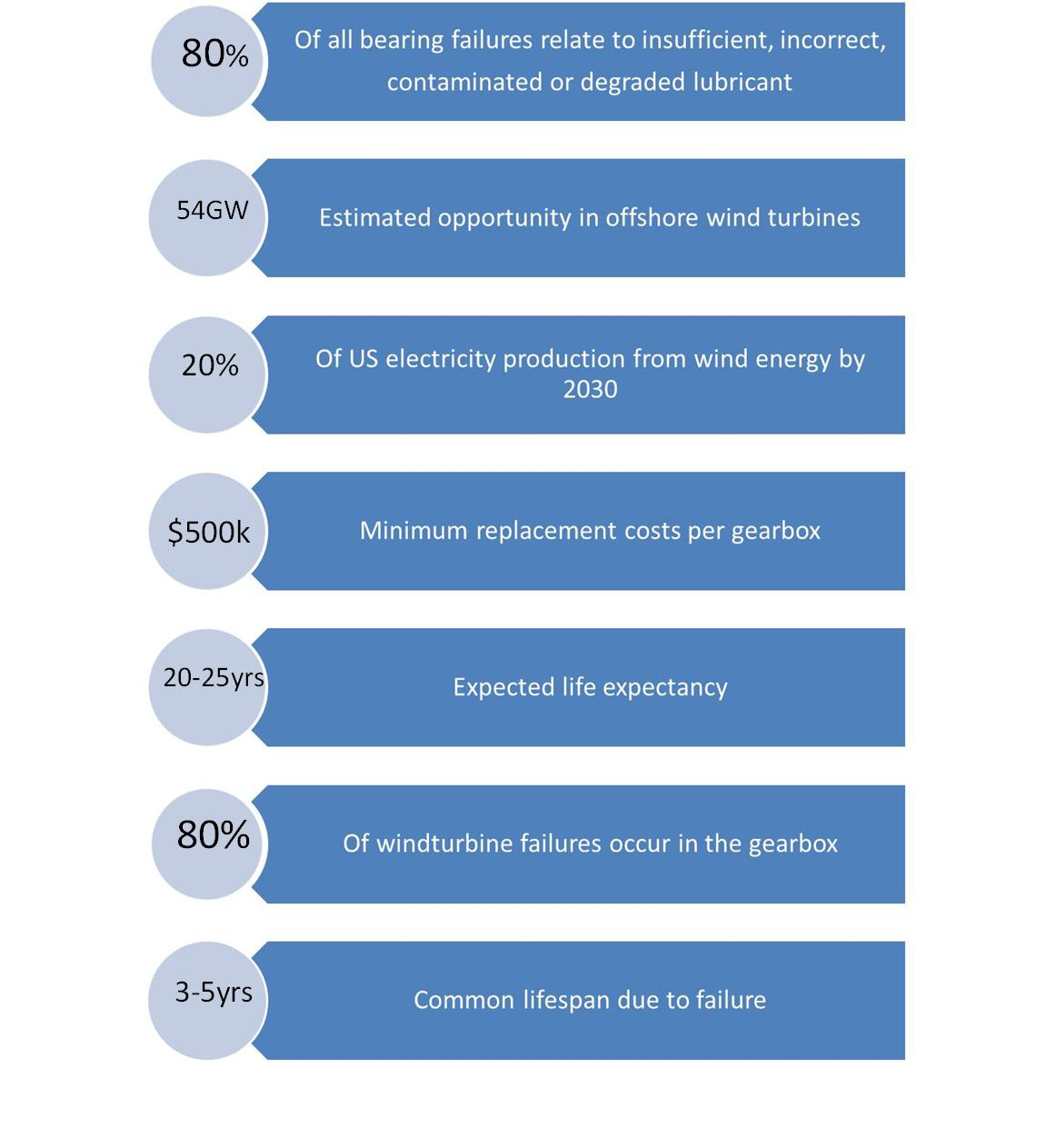Wind Turbine Issues
The Statistics
Wind Turbine Components
Gearbox
- Wind Turbine gearbox generally employs three stages of gear enhancements providing appropriate speed ratio between the low and high-speed shafts.
- Designed to handle highly varying loads from the low-speed driveshaft due to the transient nature of wind.
- Braking loads when the overspeed brake is engaged, as the brakes are connected to the high-speed shaft.
- Contamination and large variations in external temperature.
- Efficiency and noise generation are also significant concerns that are considered in wind turbine gearbox design.
- Gears are subjected to both rolling and sliding contact under varying load. Typically (EHL) lubricated using oil.
Drives
- Yaw Drive: Serves to orient the blades in the direction of the wind. Movement normally only made a few degrees at a time.
- Pitch Drive: The base of each wind turbine blade contains an actuator to actively adjust the angle of attack, or pitch, of each blade into the wind. Pitch variation allows the blades to extract an optimal amount of power under varying wind speed conditions, and also protects against gusty wind situations. The pitch bearings are directly exposed to the harsh environment and must operate under severe loads.
Bearings
- Low-Speed Bearing: Because the main or low-speed shaft is directly coupled to the blades, the low-speed bearing is subject to cyclic stresses that can cause premature failure. Cyclic stress is caused by the varying torque of each blade as it rotates from the highest altitude (where the wind speed is greatest) to the lowest point (where the low altitude and the presence of the tower causes the wind speed to be fairly low).
- High-Speed Bearing: The high-speed bearing is one of the areas of the wind turbine that is most susceptible to failure. A combination of cylindrical roller bearings, four-point contact ball bearings, and/or tapered roller bearings are used to support the applied radial and thrust loads.
Wind Turbine gearbox failure
Possible Solutions
- Improved gearbox design
- Tailored lubricant formulation
- Advanced materials and surface treatment.
White Etching Cracks (WECs)
White Etching Cracks (WECs ) are thought to be the leading cause of gearbox failure; currently this is under extensive investigation from some of the leading organisations in the industry. Argonne National Laboratory have been working closely with Afton Chemicals and SKF to understand the conditions in which they form and the behaviour of the cracks. We are pleased to hear that the PCS Micro-Pitting Rig has played a vital role in reproducing WECs under realistic conditions and has aided continued research into lubrication formulations to reduce/eliminate WECs from Wind Turbines.
To see technical published papers on this industry, click here.
The MPR continues to be used to reproduce micro-pitting, macro-pitting and scuffing in a wide range of applications to aid research and development of lubricants and coatings to obtain more efficient systems.
References:




